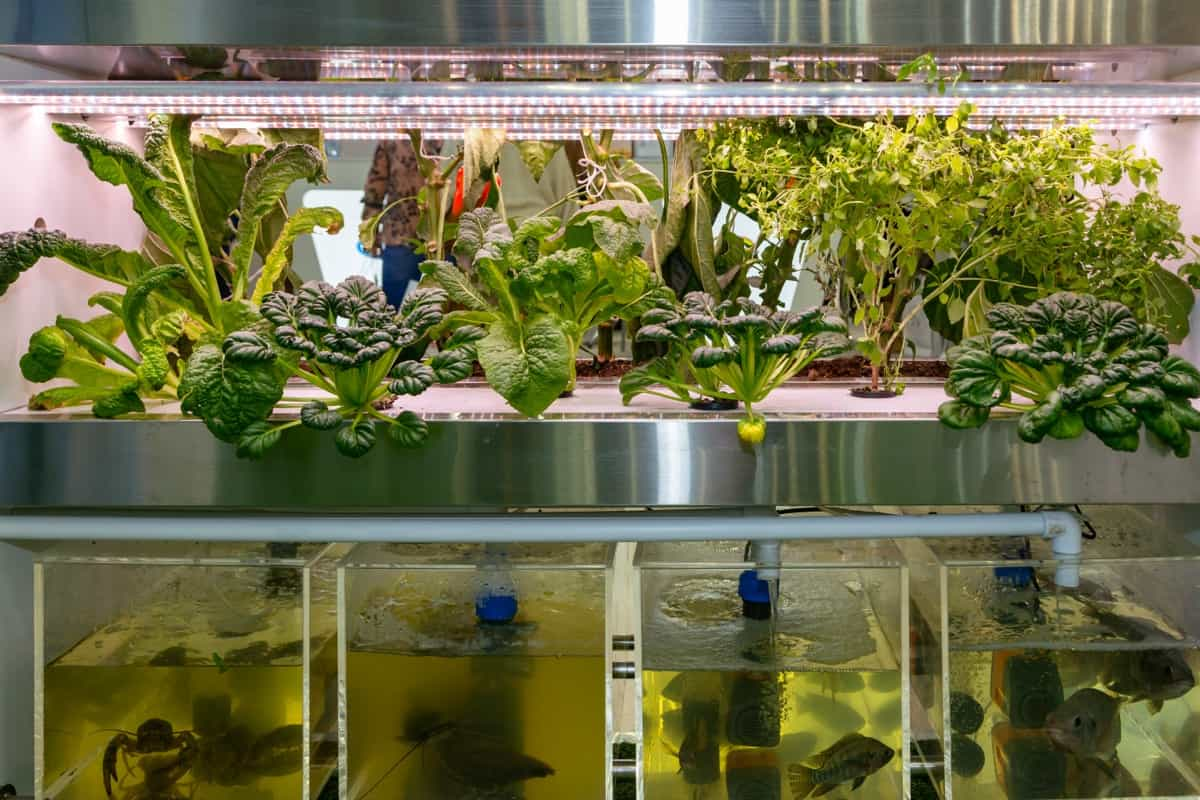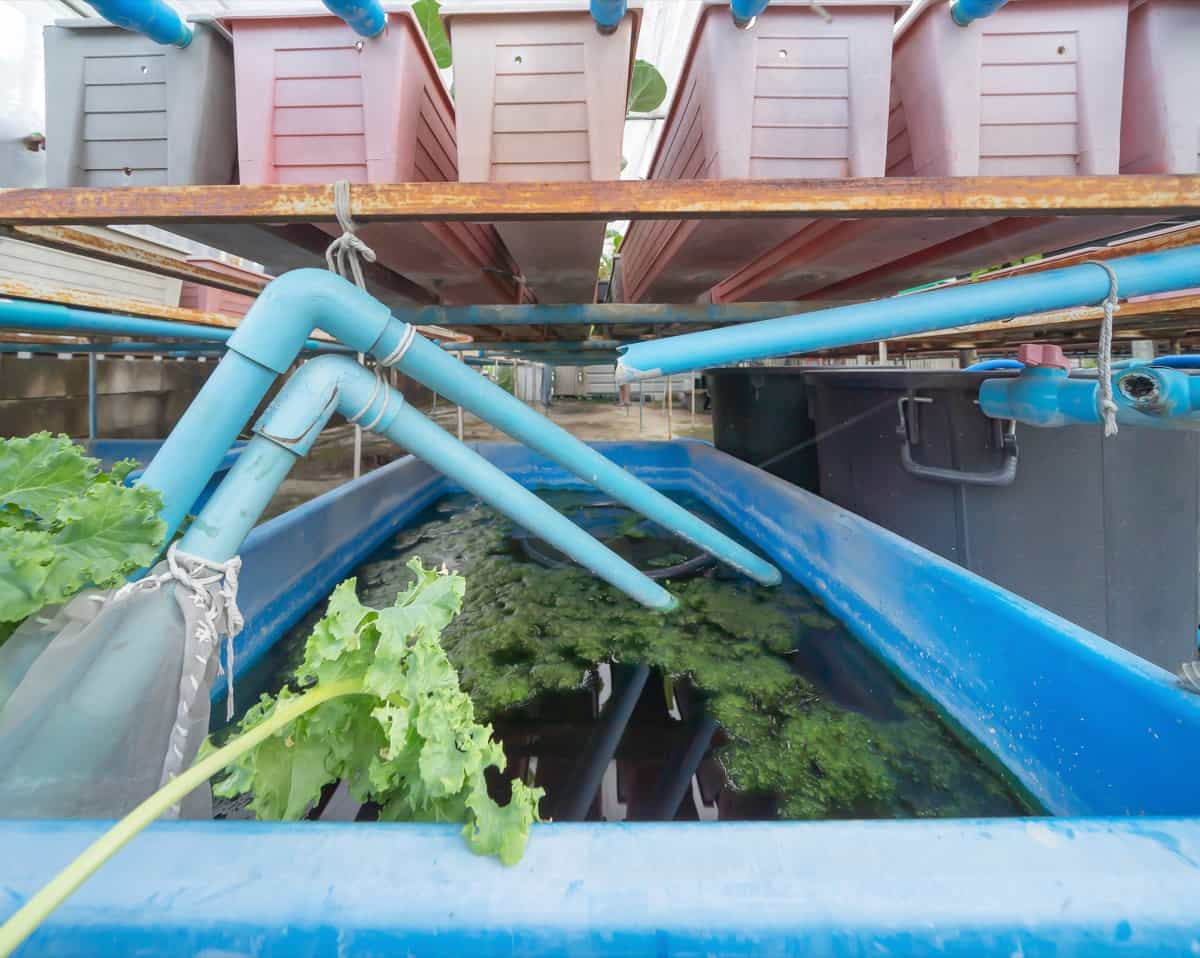Aquaponics is a fantastic way to grow plants and fish together in a symbiotic environment. From inadequate lighting and nutrient deficiencies to improper pH levels and overcrowding, various factors can hinder the flowering process in your aquaponic system. By identifying Aquaponic plant flowering problems early on and taking the necessary steps to address Aquaponic plant growth obstacles, you can help encourage your plants to bloom beautifully. With proper care, you can overcome barriers to flowering in aquaponics and enjoy thriving aquaponic gardens filled with lush greenery and vibrant blooms.

10 Reasons Why Your Aquaponic Plants Are Not Flowering
Nutrient Imbalance
Lack Of Essential Nutrients
One of the common reasons for the Lack of flowering in aquaponics could be a nutrient imbalance. If your plants lack essential nutrients, they may struggle to reach their full potential. It’s crucial to ensure that the nutrient levels in your system are well-balanced for optimal plant growth.
Adjusting Nutrient Levels
When it comes to Aquaponic gardening troubleshooting, consider adjusting the nutrient levels in your aquaponic setup. You can do this by monitoring the nutrient content in the water and making necessary adjustments accordingly. Adding organic supplements or fish-friendly nutrients can help boost flower formation in aquaponic environments.
Inadequate Light Exposure
Insufficient Light Reaching Plants
One of the flowering issues in aquaponic systems could be inadequate light exposure. Insufficient sunlight reaching your plants can hinder their ability to bloom and thrive. Plants require a certain amount of light to undergo photosynthesis and produce flowers. If your setup doesn’t receive enough natural sunlight, consider investing in supplemental grow lights to increase the light exposure for your plants.
Increasing Light Exposure
Positioning your aquaponic system in a location with better natural light or adjusting the placement of your grow lights can make a significant difference in encouraging flowering in your plants. Remember, each plant species has specific light requirements, so it’s essential to research the optimal lighting conditions for the types of plants you are growing in your aquaponics system.
Improper pH Levels
Ph Levels Outside the Optimal Range
Having the right pH levels in your aquaponic system is crucial for overall health and minimizes the causes of poor flowering in aquaponic setups. When pH levels are off, it can hinder their ability to flower and thrive.
Monitoring and Adjusting pH
Monitoring and adjusting the pH regularly is key to ensuring that your plants get the optimal environment they need. Invest in a quality pH testing kit to accurately measure the levels in your water. If you find that the pH is outside of the recommended range for your specific plants, take action immediately. Adjust the pH by adding natural buffers or acids to bring it back into balance.
Temperature Fluctuations
Drastic temperature changes
Temperature fluctuations can be a real challenge for your aquaponic plants. Sudden changes in temperature can stress out your plants and hinder their ability to flower properly.
Maintaining Stable Temperatures
Consistent temperatures are key for optimal plant growth. Drastic temperature swings can throw off the delicate balance needed for flowering to occur smoothly. It’s like trying to dance on shifting sands – not exactly a recipe for success. To combat Non-flowering plants in aquaponics, consider ways to regulate the temperature in your aquaponics system.
In case you missed it: Steps to Growing Onions in Aquaponics: Explore from How to Plant to Harvest

Insulating roots, using shading techniques during extreme heat, or even adjusting your water circulation patterns can all help stabilize those up-and-down temps that have been throwing off your plant’s groove.
Overcrowding
Excessive Plant Density
Overcrowding in your system can hinder their growth and blooming potential. When there are too many plants competing for resources like nutrients and space, it can stunt their development. To give your plants the breathing room they need to thrive, consider thinning out overcrowded areas. This process involves removing some of the excess vegetation to create more space for each plant to spread its roots and grow comfortably.
Thinning Out Overcrowded Plants
Resolving flowering problems in aquaponics by allowing each plant to access essential nutrients more effectively. This can cause healthier and more productive growth, ultimately increasing the likelihood of flowering and fruiting. Remember, maintaining a balanced environment is key to fostering optimal conditions for your aquaponic plants.
Lack of Pollination
Absence of Pollinators
One possible reason for Aquaponic plant flowering failure could be the lack of pollination. In an indoor setting, natural pollinators like bees and butterflies might not have easy access to your plants. Without proper pollination, your plants won’t produce fruits or flowers to their full potential.
Hand-pollination Techniques
You can take matters into your own hands with hand-pollination techniques. By using a small brush, transfer pollen from one flower to another. This simple yet effective method mimics the work of natural pollinators and can help kickstart the flowering process in your aquaponic setup.
Insufficient Root Space
Restricted Root Growth
One of the Aquaponic gardening flower development issues could be insufficient root space. When roots are cramped and restricted, they can’t access the essential nutrients and water for optimal growth.
Providing Adequate Root Space
To Improve flower yield in aquaponic setups, consider providing your plants with adequate root space by transplanting them into larger containers or hydroponic systems that allow for better root development. By giving your plants room to spread their roots and thrive, you’re setting them up for success in reaching their full flowering potential. Remember, healthy roots lead to healthy plants. So, don’t underestimate the importance of ensuring sufficient root space for your aquaponic setup.
Water Quality Issues
Poor Water Quality
Water quality is crucial for flower production in aquaponic gardens. Poor water quality can hinder their ability to flower and thrive. Testing and maintaining water parameters regularly are essential to ensure optimal conditions for your plants. Check key parameters such as pH, ammonia, nitrites, nitrates, and oxygen levels. Monitoring these factors will help you identify any issues with water quality promptly.
Testing and Maintaining Water Parameters
Regularly adjust the pH levels to keep them within the ideal range for your plants. Fluctuations in pH can cause stress in the plants and prevent them from flowering properly. Aerate the system if necessary to ensure an adequate supply of oxygen reaches the plant roots.
In case you missed it: Top 12 Fruits to Grow in Aquaponics

Pests and Diseases
Pest Infestation
Dealing with pests and diseases in your aquaponic system can be a real challenge. Pest infestations can quickly spread, affecting the health of your plants. One effective way to manage pests is by introducing natural predators that feed on harmful insects. Ladybugs, for example, are great allies in controlling aphids and other plant-damaging bugs. Additionally, practicing good hygiene by regularly cleaning your aquaponic setup can help minimize the risk of disease outbreaks.
Disease Prevention and Management
When it comes to maximizing flower growth in aquaponic systems, maintaining proper water quality is key. Regularly testing the water parameters and ensuring they are within optimal ranges can significantly reduce the likelihood of diseases taking hold in your system. In cases where pests or diseases do appear, swift action is crucial. Consider organic remedies like neem oil as a gentle yet effective way to tackle pest problems without harming your fish or plants.
Genetic Factors
Genetic Predispositions
Genetic factors play a key role in enhancing flowering in aquaponic systems. Some plant varieties are naturally predisposed to flower more readily than others due to their genetic makeup. When selecting which plants to grow in your system, consider choosing varieties known for their prolific blooming capabilities.
Selecting Appropriate Plant Varieties
Certain plant species have been bred specifically for their ability to flower under varying conditions, making them ideal choices for aquaponic setups. By opting for these genetically enhanced varieties, you can enhance flowering in aquaponic systems. Keep in mind that genetic predispositions also affect other aspects of plant growth, such as disease resistance and overall health.
In case you missed it: Top 20 Flowers To Grow In Aquaponics

Conclusion
Ensuring the optimal growth and flowering of your aquaponic plants requires a combination of factors to be carefully managed. By addressing issues such as nutrient imbalance, inadequate light exposure, improper pH levels, temperature fluctuations, overcrowding, lack of pollination, insufficient root space, water quality issues, pests and diseases, and genetic factors, you can create the best environment for your plants to thrive.
- Flower Garden Designs and Layouts for Beginners
- Planting and Spacing Techniques in Papaya: A Beginner’s Guide
- Growing Gold: Essential Techniques for Planting Pineapples
- How to Make Kalanchoe Plant Bushy: Home Remedies and Solutions
- 11 Reasons Why Your Gardenia is Not Blooming: Home Remedies and Solutions
- Eco Elegance: The Guide to Designing a Drought-Tolerant Landscape
- Gardening on a Slope: Strategies for Hillside Landscaping
- Nourish and Flourish: Top Organic Mulches for Thriving House Plants
- Everything You Want to Know about Indian Mogra Flower: Discover Uses and Growing
- Green Thumb Success: Expert Tips for Cultivating Greenhouse Pumpkins All Year Round
- Maximize Growth & Flavor: The Ultimate Guide to Companion Planting in Herb Gardens
- How to Control Rhododendron Problems Naturally: Home Remedies and Organic Ways to Fix Them
- Natural Magic: The Remarkable Benefits of Cinnamon for Plants
- Best Steps to Revive Dying Tulip with Natural and Organic Treatment
- 10 Reasons Why Your Angel Trumpet is Not Blooming: Remedies and Treatment
- How to Fix Periwinkle Leaf and Flower-Related Problems: Natural Remedies and Solutions
- How to Fix Zinnias Leaf and Flower Problems: Discover Natural and Home Remedies
- Organic Steps to Induce Lemon Tree Flowers: A Comprehensive Guide
- Bloom Booster: Crafting the Perfect Homemade Bougainvillea Fertilizer
- Optimizing Growth: A Guide to Applying NPK Fertilizer for Potted Plants
- 10 Best Homemade Fertilizers for Rubber Plant: DIY Recipes and Application Method
- How to Boost Female Pumpkin Flowers: Effective Steps for More Flowers and High Yields
- Transform Your Indoor Garden: Top Benefits of Pink Salt for Houseplants
- 10 Best Homemade Fertilizers for Peacock Plants (Calathea): Easy DIY Guide
- Unlock Blooms: 9 Reasons Why Your Potted Chrysanthemum is Not Blooming
- 8 Reasons Why Your Potted Hibiscus is Not Blooming: Fix it with Simple Solutions
- Unlock Blooms: 9 Key Reasons Your Potted Frangipani Won’t Flower
- 10 Reasons Why Is My Ice Plant Not Blooming: Remedies and Treatment
- 10 Reasons Why My Potted Hydrangea Not Blooming: Treatment and Remedies
- 10 Reasons Why is My Wisteria Not Blooming: Remedies and Treatment
- 10 Reasons Why is My Goldfish Plant Not Blooming: Remedies and Treatment
- Maximize Your Space: Ultimate Guide to Balcony Gardening with Grow Bags
- 10 Reasons Why Your Iris is Not Blooming: Remedies and Treatment
- 10 Reasons Why Your Anthurium Plant is Not Blooming: Treatment and Remedies
- 10 Reasons Why Your Aquaponic Plants Are Not Flowering: Remedies and Treatment
- 10 Reasons Why Your Agapanthus is Not Flowering: Remedies and Treatment